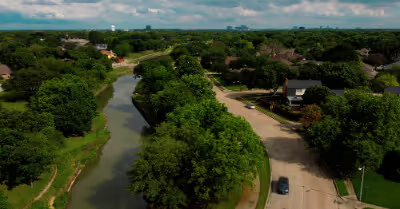Table of Contents
Independent Living (IL or ILF)
This one leaves nothing to question: says is like it is. Independent Living, or IL/ILF, is for those retirees who can take care of themselves and just want a downsize in square footage and the responsibility that comes with owning a home. These communities are designed as small homes, condos, or apartments. The draw is to live in a community with like-minded peers, to live in a comfortable area designed specifically for retirement with amenities like, housekeeping, security systems, yard maintenance, and social calendar events. The setting of independent living homes is pristine with manicured gardens, pools, and beautiful views: almost like vacation.
Active-adult communities are synonymous with Independent Living, catering to those who enjoy the most active of lifestyles. There are also types of communities that center around specific hobbies, like golfing and artistry. Because of the surge of retirees, more options for retired living are popping up. There is something for everyone with Lifestyle Communities. Here are a few more examples of active retirement communities: faith-centered homes, boating communities, luxury communities, and university-based communities (for those senior who want to expand their knowledge). You can spend the rest of your life doing the thing you love the most, and in an environment with people just like you.
Costs for Independent Retirement can vary between $1,500 to $10,000 a month depending on the community and amenities. In some cases, you can add on various medical services for an extra fee depending on your residence.
Assisted Living (AL or ALF)
Assisted Living, AL or ALF, is similar to Independent Living, but with the added benefit of in-home care and assistance. Staff members are available for medication administration, transportation, basic tasks, such as getting dressed or making meals. Medical and daily assistance is tailor-made for each senior; this might also include bathing, physical therapy, and household cleaning. A part of getting older is routine doctor visits; instead of driving to your local primary care doctor, a staff physician will provide routine checkups. Assisted Living is beneficial because of the simplicity of home care. Nurses are on site for 24 hours a day to assist with all issues that might come up. Assisted Living provides the same type of social events as Independent Living, like movie nights, Bingo rounds, and Yoga classes. You have the comforts of your home with the added medical care.
The pricing for Assisted Living is similar to that of Independent with the average cost of a private apartment at $2,575 a month. There is also a general move-in fee that can range from $1,000 to $5,000.
Skilled Nursing Facility (SNF)
Nursing homes, or Skilled Nursing Facilities, SNF’s, are a step above Assisted Living: these are often necessary when a senior requires a higher level of medical assistance. One thing about these types of retirement homes; they are often not permanent and only used for temporary needs. For example, a patient might need medical care for monitoring vital signs, caring for wounds, or practicing physical therapy. After the patient has recovered, they are sent back to their Assisted Living Retirement Home, or to their own house. In some cases, people will spend the rest of their lives in these homes if the injury or disease is critical enough. When someone needs constant care, nurses are put in place to act as caregivers, often under contract to a specific patient for a certain amount of time. They will work with the patient as mediators between the one in medical care, doctors, and family members.
These facilities are similar to hospitals, either with private rooms or small homes. The average cost for a private room is $219 a day, while the cost for a semi-private room is $198 a day.
Continuous Care Retirement Community (CCRC)
There is something special about Continuous Care Retirement Communities, CCRC’s: they combine the benefits of all three types of living situations - independent, assisted, and skilled nursing homes. You can join these communities at any stage of life, provided you are 55, and live comfortably as you age. Independence is often a huge factor when deciding on the type of retirement home; with Continuous Care Retirement Communities, you can be as independent as you want. These homes are built in sections relating to levels of care. Seniors who want to stay active and have a relatively similar life to before they moved can stay in the independent sector. When the need arises, they can choose to move to the assisted living centers in the same complex. The beautiful thing about these retirement communities is that you can stay in the same place for life: no need to change facilities and move across town. You can be comfortable for the rest of your life. The community you have grown to love will always be there: your chess club, water aerobics class, your next-door neighbors, etc. Continuous Care Retirement is made for the aging senior in mind: personalized for each retiree depending on their level of required care.
Even though this sounds like the best option for any retiring senior, it is the most expensive of all of them. Entrance fees can start from $100,000 and soar to $1 million, while monthly payments range from $3,000 to $5,000. The benefits cannot be compared to the other forms of retirement homes so it is something to consider.
All retirement communities are built with the retiring senior in mind; it is up to you to determine which level of comfort and care and desire for you or loved ones. Independent Communities are set up in mind for those adults who are self-sufficient, but want a quieter style of life. Assisted Care is a mix of independency and medical assistance and daily care. Continuous Care Retirement Communities blend all three together for the senior who wants to stay in the same community for life, but have different levels of assistance as the need arises. All great options!
Recent Articles
















